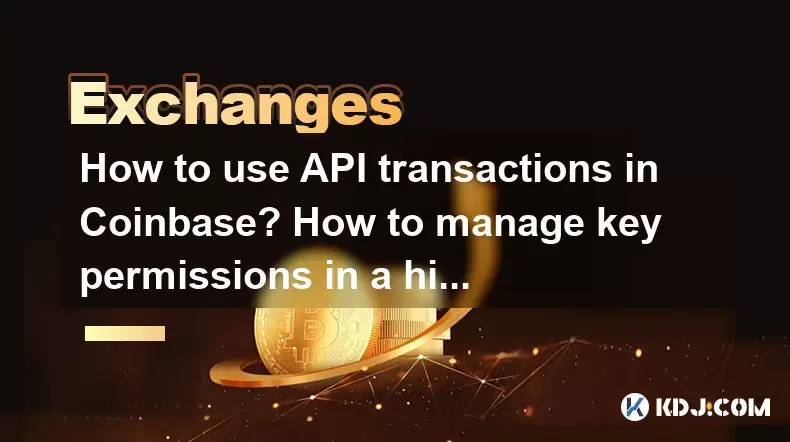-
 Bitcoin
Bitcoin $117500
2.15% -
 Ethereum
Ethereum $3911
6.19% -
 XRP
XRP $3.316
10.79% -
 Tether USDt
Tether USDt $1.000
0.01% -
 BNB
BNB $787.2
2.24% -
 Solana
Solana $175.2
4.15% -
 USDC
USDC $0.9999
0.00% -
 Dogecoin
Dogecoin $0.2225
8.40% -
 TRON
TRON $0.3383
0.28% -
 Cardano
Cardano $0.7868
6.02% -
 Stellar
Stellar $0.4382
9.34% -
 Hyperliquid
Hyperliquid $40.92
7.56% -
 Sui
Sui $3.764
7.63% -
 Chainlink
Chainlink $18.48
10.66% -
 Bitcoin Cash
Bitcoin Cash $582.1
1.88% -
 Hedera
Hedera $0.2601
6.30% -
 Avalanche
Avalanche $23.33
4.94% -
 Ethena USDe
Ethena USDe $1.001
0.02% -
 Litecoin
Litecoin $122.3
2.04% -
 UNUS SED LEO
UNUS SED LEO $8.969
-0.27% -
 Toncoin
Toncoin $3.339
0.86% -
 Shiba Inu
Shiba Inu $0.00001287
4.30% -
 Uniswap
Uniswap $10.43
7.38% -
 Polkadot
Polkadot $3.861
5.08% -
 Dai
Dai $1.000
0.02% -
 Bitget Token
Bitget Token $4.513
3.41% -
 Monero
Monero $267.7
-6.18% -
 Cronos
Cronos $0.1499
4.14% -
 Pepe
Pepe $0.00001110
5.15% -
 Aave
Aave $284.9
8.28%
How to use API transactions in Coinbase? How to manage key permissions in a hierarchical manner?
Use Coinbase's API for efficient crypto transactions by setting up API keys with appropriate permissions and managing them hierarchically for enhanced security.
May 18, 2025 at 09:56 pm

Using API transactions in Coinbase and managing key permissions in a hierarchical manner are crucial aspects of efficiently handling cryptocurrency operations. This article will guide you through the steps necessary to leverage Coinbase's API for transactions and explain how to manage key permissions effectively.
Understanding Coinbase API Transactions
Coinbase's API provides a powerful tool for users to automate and manage their cryptocurrency transactions programmatically. This can be particularly useful for traders, developers, and businesses looking to integrate cryptocurrency payments into their systems. The API supports various operations including buying, selling, sending, and receiving cryptocurrencies.
To begin using the Coinbase API for transactions, you first need to set up an API key. Navigate to your Coinbase account settings, and under the API section, you can generate a new API key. Ensure that you select the appropriate permissions based on the operations you intend to perform. For transactions, you will need at least the 'wallet:transactions:request' and 'wallet:transactions:send' permissions.
Once you have your API key, you can start making requests to the Coinbase API. The API uses RESTful endpoints, and you will need to include your API key in the headers of your requests. Here is a basic example of how to structure a request to send Bitcoin:
- Include your API key in the Authorization header:
Authorization: Bearer YOUR_API_KEY - Specify the endpoint:
POST /v2/accounts/{account_id}/transactions - Include the transaction details in the request body:
{
"type": "send",
"to": "recipient_address",
"amount": "amount_to_send",
"currency": "BTC"
}Executing API Transactions
To execute transactions via the Coinbase API, you must follow a structured process. Here’s how you can perform a typical transaction:
- Identify the account from which you want to send funds. You can retrieve your account ID by making a GET request to
/v2/accounts. - Prepare the transaction data. This includes specifying the recipient's address, the amount, and the currency.
- Send the transaction request using the POST method to the
/v2/accounts/{account_id}/transactionsendpoint, as described above. - Verify the transaction status. After sending the request, you can check the transaction status by making a GET request to
/v2/accounts/{account_id}/transactions/{transaction_id}.
Managing Key Permissions in a Hierarchical Manner
Managing key permissions hierarchically is essential for maintaining security and control over your Coinbase account. Coinbase allows you to set up different API keys with varying levels of permissions, which can be organized in a hierarchical structure.
To set up a hierarchical structure for your key permissions, follow these steps:
- Create a master API key with full permissions. This key will serve as the top level of your hierarchy and should be used sparingly.
- Generate subordinate API keys for specific purposes. For example, you might create one key for read-only access to account balances and another for sending transactions.
- Assign permissions carefully. Each subordinate key should have only the permissions necessary for its intended use. This minimizes the risk if a key is compromised.
For instance, if you are setting up a key for a trading bot, you might only give it permissions to view balances and execute trades, but not to withdraw funds.
Securing Your API Keys
Securing your API keys is paramount to preventing unauthorized access to your Coinbase account. Here are some best practices:
- Use environment variables to store your API keys instead of hardcoding them into your scripts or applications.
- Implement key rotation. Regularly regenerate your API keys to reduce the window of opportunity for any potential security breaches.
- Limit the lifespan of your API keys. Set expiration dates for your keys to further enhance security.
Monitoring and Auditing API Transactions
Monitoring and auditing your API transactions is crucial for maintaining the integrity of your account. Coinbase provides tools to help you keep track of all transactions made via the API.
- Use the Coinbase API to fetch transaction history. You can make a GET request to
/v2/accounts/{account_id}/transactionsto retrieve a list of all transactions for a specific account. - Set up alerts. You can use third-party tools or scripts to monitor your account and receive notifications for any suspicious activity.
- Regularly review your API key usage. Check which keys are being used and for what purposes to ensure they are still necessary and secure.
Integrating Coinbase API with Other Services
Integrating the Coinbase API with other services can enhance your cryptocurrency management capabilities. For instance, you might integrate it with a trading platform or a payment gateway.
- Choose the appropriate API endpoints for your integration needs. For example, if you are integrating with a payment gateway, you might focus on the
/v2/accounts/{account_id}/transactionsendpoint for sending and receiving payments. - Ensure secure communication between your service and Coinbase. Use HTTPS and encrypt any sensitive data transmitted between the services.
- Test your integration thoroughly. Before going live, make sure to test all possible scenarios to ensure that your integration works as expected and handles errors gracefully.
Frequently Asked Questions
Q: Can I use the Coinbase API to automate trading strategies?
A: Yes, you can use the Coinbase API to automate trading strategies by integrating it with trading algorithms. Ensure that you set up API keys with the appropriate permissions for executing trades.
Q: How often should I rotate my API keys?
A: It is recommended to rotate your API keys at least every 30 to 90 days, depending on the level of security you require and the frequency of use.
Q: Can I restrict an API key to only specific cryptocurrencies?
A: Yes, when creating an API key, you can specify which cryptocurrencies it has access to, allowing you to restrict its permissions to only the necessary assets.
Q: What should I do if I suspect my API key has been compromised?
A: If you suspect your API key has been compromised, immediately revoke the key from your Coinbase account settings and generate a new one. Monitor your account closely for any unauthorized transactions and consider implementing additional security measures.
Disclaimer:info@kdj.com
The information provided is not trading advice. kdj.com does not assume any responsibility for any investments made based on the information provided in this article. Cryptocurrencies are highly volatile and it is highly recommended that you invest with caution after thorough research!
If you believe that the content used on this website infringes your copyright, please contact us immediately (info@kdj.com) and we will delete it promptly.
- SNEK, Cardano, and the Contributor's Conundrum: A Meme Coin's Fight for Recognition
- 2025-08-08 16:30:12
- Toshi Crypto's Wild Ride: Rally, Demand Slump, and What's Next
- 2025-08-08 16:30:12
- Ethereum, Staking Yields, and DeFi Exposure: A New Era for Investors?
- 2025-08-08 15:10:12
- Unilabs Pumps MIA, Binance Coin Bouncing Back, and Ethereum's Bearish Blues
- 2025-08-08 15:10:12
- Ethereum's Wyckoff Markup and Market Rotation: A New Era?
- 2025-08-08 15:30:12
- Ethereum, Vitalik Buterin, and the Overleveraged Game: A Balancing Act
- 2025-08-08 15:30:12
Related knowledge

How to use margin trading on Poloniex
Aug 08,2025 at 09:50am
Understanding Margin Trading on Poloniex

How to use advanced trading on Gemini
Aug 08,2025 at 04:07am
Understanding Advanced Trading on GeminiAdvanced trading on Gemini refers to a suite of tools and order types designed for experienced traders who wan...

How to deposit USD on Bitstamp
Aug 07,2025 at 05:18pm
Understanding Bitstamp and USD DepositsBitstamp is one of the longest-standing cryptocurrency exchanges in the industry, offering users the ability to...

How to use the Kraken Pro interface
Aug 08,2025 at 09:57am
Understanding the Kraken Pro Interface LayoutThe Kraken Pro interface is designed for both novice and experienced traders seeking a streamlined experi...

How to find my transaction ID on Gemini
Aug 08,2025 at 12:50am
Understanding the Transaction ID in Cryptocurrency ExchangesA transaction ID (TXID) is a unique alphanumeric string that identifies a specific transfe...

How to calculate crypto taxes from Binance
Aug 08,2025 at 07:56am
Understanding Cryptocurrency Taxation on BinanceCalculating crypto taxes from Binance requires a clear understanding of how tax authorities classify d...

How to use margin trading on Poloniex
Aug 08,2025 at 09:50am
Understanding Margin Trading on Poloniex

How to use advanced trading on Gemini
Aug 08,2025 at 04:07am
Understanding Advanced Trading on GeminiAdvanced trading on Gemini refers to a suite of tools and order types designed for experienced traders who wan...

How to deposit USD on Bitstamp
Aug 07,2025 at 05:18pm
Understanding Bitstamp and USD DepositsBitstamp is one of the longest-standing cryptocurrency exchanges in the industry, offering users the ability to...

How to use the Kraken Pro interface
Aug 08,2025 at 09:57am
Understanding the Kraken Pro Interface LayoutThe Kraken Pro interface is designed for both novice and experienced traders seeking a streamlined experi...

How to find my transaction ID on Gemini
Aug 08,2025 at 12:50am
Understanding the Transaction ID in Cryptocurrency ExchangesA transaction ID (TXID) is a unique alphanumeric string that identifies a specific transfe...

How to calculate crypto taxes from Binance
Aug 08,2025 at 07:56am
Understanding Cryptocurrency Taxation on BinanceCalculating crypto taxes from Binance requires a clear understanding of how tax authorities classify d...
See all articles

























































































